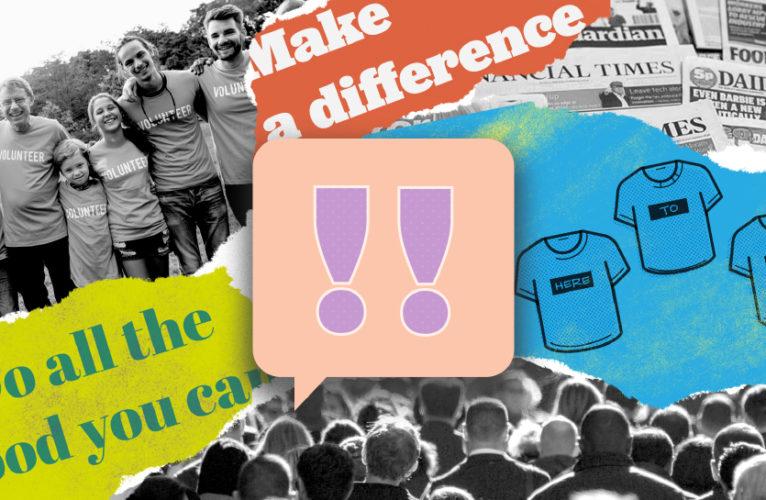Volunteerism in a crisis: What to know about generosity
October 04, 2021
6 min read
When a crisis arises in a community, people often come together to help those negatively affected. Considering the COVID-19 crisis and its wide-scale effects on communities around the world, people everywhere started stepping up to help their communities by volunteering—despite the personal risk that helping presented.
As a non-profit or charity, it’s important to consider the ways your volunteer network has been impacted by the crisis in question and what you can do to maximize your supporters’ impact. Specifically, this article will explore how volunteerism and generosity can continue to grow even in a difficult time, and what you can do to support it—as well as how donors themselves can chip in to help most effectively.
Here are 3 specific notions that we’ve seen in the last year:
- Volunteerism will adapt to a crisis.
- People want to be a part of the solution.
- Volunteerism provides opportunities for non-financial support.
Let’s explore the many ways communities and non-profits can adapt and evolve to meet the needs of a community when a crisis occurs.
1. Volunteerism will adapt to a crisis.
Volunteers are the main workforce behind many essential community services, making them especially invaluable when a crisis arises. In these times, organizations have to adapt quickly to the new circumstance and adjust their volunteer programs accordingly.
For example, during the COVID-19 crisis, food banks and other organizations had to quickly adapt their procedures to ensure people were being served in the safest way possible.
According to the Food Banks Canada COVID-19 Crisis Report, more than 70% of food banks initiated a home delivery service. This type of program required food banks to quickly recruit volunteer delivery drivers and create a volunteer management process that can maximize their impact.
The COVID crisis presented a high-pressure test case scenario in how to deftly adjust non-profit and charitable programming and services. This included reallocating resources and reassigning staff and volunteers towards updated tasks.
Other non-profit and charity organizations had to cancel their in-person programs to follow health guidelines—which meant they needed to figure out how to continue their important work remotely. This led to a rapid rise in virtual volunteerism, allowing volunteers to contribute to the causes they felt passionate about from wherever they were.
Regardless of volunteers’ motivations, it is clear that when a community is faced with a crisis, volunteers are always there—willing to adapt to ensure people receive the services and support they need to weather the crisis.
When a community is faced with a crisis, volunteers are there.
2. People want to be a part of the solution.
Studies show that more than 71% of Canadians feel a personal responsibility to make the world a better place. This sense of responsibility applies directly to the way people respond to a crisis. Oftentimes, individuals will rally to contribute in any way they can towards being a part of the solution.
While people were stuck in their homes during the COVID-19 outbreak, people around the world were turning online to learn how to help their community. According to the International Labour Organization, “The highest values of the Google search index for the word ‘volunteering’—in different languages—were registered precisely in those two months in early 2020 when the pandemic was at its height…”
While this information doesn’t indicate how many people actually volunteered their time during the pandemic, it does clearly show that people were keen to learn how they could help.
3. Volunteerism provides opportunities for non-financial support.
During an economic crisis, monetary donations often decline as people’s financial security comes into question. For example, during the 2008 recession, reports show that total giving dropped by 7.2% in 2008 and then decreased by another 8% in 2009.
Similarly, many organizations saw decreased giving during the pandemic and subsequent economic turbulence of 2020. Yet dedicated supporters care about their causes as much as ever, they just might not have the cash to spare. That’s why, in periods of uncertainty, people are often more inclined to contribute toward the cause they believe in with their time rather than their money.
Donors who have found causes that they care more deeply about—because they align with their own values or resonate with their life experiences—may find it easier to keep giving to those causes when situations fluctuate.
Charities and non-profit organizations can encourage people to volunteer during challenging times by offering a multitude of volunteer opportunities requiring different skill sets. By providing a number of ways for individuals to make a positive impact without reaching into their wallets, organizations can continue to pursue their missions effectively, backed by dedicated and purpose-driven volunteers.
As a donor looking to give of one’s time, skill, or talent, it’s important to reach out to charities in your community and beyond. Get in touch with local organizations and ask about their needs. This can help ensure the help you provide is effective and valuable.
Depending on the type of work you would like to do, there may be opportunities to volunteer remotely with organizations headquartered outside of your own community or city.
Donors who have found causes that they care more deeply about may find it easier to keep giving to those causes when situations fluctuate.
Looking forward
Despite its nature, there are often positive outcomes that can arise from a crisis, and volunteerism is the perfect example of how communities can rally together to help each other.
Adaptation, innovation, and retooling to manage volunteers are at the heart of any successful response. Now it’s up to you and your organization to prepare sufficiently and ensure your organization is ready to act quickly if and when a new crisis arises.
This is a guest post from Cassandra Smallman, Head of Marketing at InitLive. Cassandra is a passionate content creator dedicated to fostering positive impact through thought leadership in both the non-profit sector and live events industry. You can find her work at www.initlive.com or on LinkedIn and Twitter.

